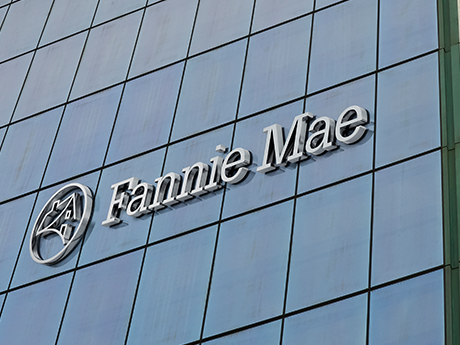WASHINGTON, D.C. —The Mortgage Bankers Association (MBA) recently published that multifamily originations totaled $246.2 billion in 2023, a 49 percent decline compared to 2022 and below its April estimation of $264 billion. Additionally, the Washington, D.C.-based organization said that 51 percent of active lenders made five or fewer multifamily loans last year.
While a step back in terms of loan volume, the multifamily sector still stands out relative to other property types as the sector represented more than 60 percent of all commercial real estate loans provided in 2023, according to an MBA report in April.
Chris Flynn, senior vice president and multifamily chief underwriter for Fannie Mae Multifamily, says that it’s important to keep that in perspective as all loans for all commercial real estate asset classes declined in 2023.

“Multifamily was seen as an attractive asset class among the commercial real estate sectors in 2023 and was viewed as relatively more stable, from an investment perspective, compared to office, retail, and industrial,” says Flynn.
The agencies didn’t take any breaks last year as Fannie Mae and Freddie Mac combined to generate 42 percent of all 2023 multifamily loans, according to the MBA, which tracks loans made on multifamily properties with five or more units. Fannie Mae and its network of Delegated Underwriting & Servicing (DUS) lenders provided $52 billion in multifamily loans last year, while Freddie Mac and its Optigo network of seller-servicer partners originated $48 billion.
REBusinessOnline.com recently sat down with Flynn and another Fannie Mae Multifamily executive, Rob Levin, senior vice president and multifamily chief customer officer, to discuss the agency’s activity thus far this year and other trends and topics, including new Fannie Mae loan products catered to affordable housing borrowers. The following is an edited interview:
REBusinessOnline: For multifamily borrowers wary of interest rate’s “higher for longer” dynamic currently, what advice is Fannie Mae giving its DUS lending partners?
Rob Levin: We have demonstrated to the market that Fannie Mae is here to provide countercyclical stability. Our advice to lenders and borrowers is to be ready to act when the rates move or meet their needs.

REBO: New multifamily business volume for Fannie Mae was $10.1 billion in the first quarter of 2024, compared with $11.2 billion in the fourth quarter of 2023. What are some highlights from the first quarter that you hope to replicate for the rest of the year?
Levin: Fannie Mae was active across all market segments during the first quarter of 2024. Mission goals are central to the work we do to expand access to affordable housing. This year, we are focused on our newly launched workforce product, Sponsor-Dedicated Workforce Housing (SDW), which is geared toward conventional/market-rate borrowers that are not necessarily experienced nor focused in capital “A” affordable housing but are interested in creating or preserving affordability. The product was released in fourth-quarter 2023 and has been very well-received by the market, so we hope to have continued success for the rest of the year.
REBO: The Federal Housing Finance Agency (FHFA) once again revised the multifamily lending caps down for the agencies this year, this time by $5 billion for both agencies — so $70 billion apiece. Was this expected given that Fannie Mae’s total volume for 2023 was about $52 billion and interest rates still remain elevated?
Chris Flynn: The decrease in lending caps is unsurprising given the decrease in multifamily originations due to reduced property sales, higher interest rates, declining property values and subdued rent growth. Rent growth is expected to remain below average for the remainder of 2024 with vacancy rates increasing due to new supply expected to deliver this year. As a result, we believe that the 2024 multifamily market sizing estimate will be similar to last year’s level but is dependent upon any change in interest rates that may take place this year.
REBO: One new wrinkle is that the agencies have a complete green light on loans classified as supporting workforce housing as defined in the FHFA Scorecard. How is business activity gone for the mission-driven business? Are there any new products/programs that you’d like our readers to know about?
Levin: According to the 2024 FHFA release of Appendix A, both Sponsor-Initiated Affordability (SIA) and SDW meet the criteria of the refined definition of “workforce.” Additionally, for 2024, these workforce loans were excluded from the overall cap and received more favorable mission treatment encouraged by the workforce life-of-loan restrictions. With our focus on bolstering the preservation and, where possible, the creation of workforce housing across the country through SIA and SDW, Fannie Mae has been engaging the industry on both initiatives to develop new and meaningful ways to creatively stretch and leverage these programs in 2024.
REBO: Have you seen any trends as far as underwriting — term length, fixed vs. floating, etc. — for DUS loans in recent months? Also, what is the dynamic between acquisition loans and refinancings for Fannie Mae?
Flynn: Historically, our core execution has been a 10-year fixed rate execution, generally accounting for the majority our annual production. Throughout 2023, we saw a growing appetite for shorter-term loans, with 5-year and 7-year terms accounting for more than 50 percent of our volume by the end of the year. That trend has continued this year, with shorter-term loans accounting for 63 percent of our volume in the first quarter of 2024. Borrowers are still expecting rates to decrease at some point in the future.

Variable rate loans accounted for less than 1 percent of total volume in 2023 and we do not expect that to increase this year. In terms of acquisitions vs. refinance, in the first quarter of 2024, we were generally at 64 percent refinance transactions and 36 percent acquisition transactions. In 2023, that mix was closer to 70 percent refinance transactions and 30 percent acquisition transactions.
REBO: Overall rental affordability is tough for many Americans as wages have not kept pace with inflation or housing cost increases. While it’s clear the ways Fannie Mae is addressing the supply side of affordable housing, what are some ways that the agency is working to help address the demand side of the supply/demand dynamic?
Levin: Various demographic and economic factors determine demand levels for affordable housing. And while we have no control over demand, we are committed to the creation and preservation of affordable housing through LIHTC equity. From 2018 to 2023, Fannie Mae’s LIHTC (Low Income Housing Tax Credit) activities have resulted in approximately $4 billion in committed net equity.
To accomplish this, Fannie Mae’s LIHTC team has partnered with 14 syndicators, including five nonprofit syndicator members of the National Association of State and Local Equity Funds (NASLEFs). We have committed to LIHTC investments in 49 of 50 states, three territories (Guam, Puerto Rico, US Virgin Islands), and Washington, D.C. Additionally, we provide mortgage-backed securities as tax-exempt collateral (MTEBs) in over 20 states, which further expands access to affordable housing for low-income renters.
REBO: Lastly, how does 2024 stack up as far as the amount of loan maturities coming due for existing Fannie Mae Multifamily loans?
Flynn: Our total book as of March 31, 2024, was $477 billion, and, as of that date, we have $8 billion in estimated maturities remaining in 2024, with a much higher percentage of pending maturities in 2026 and 2027.


